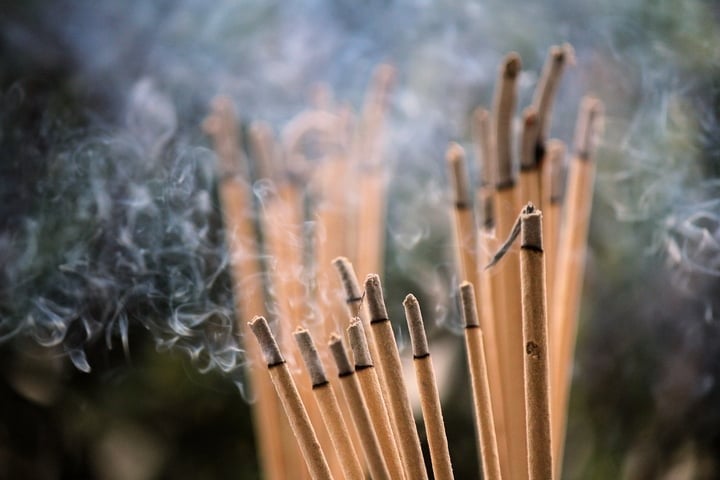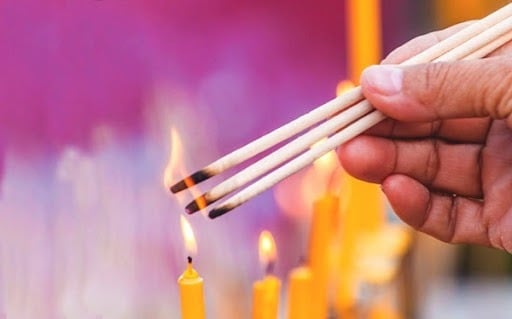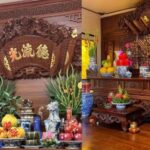Incense burning is an important ritual in the spiritual and religious practices of Vietnamese people. It is a way to connect with ancestors and deities, showing reverence and piety to those being worshipped.
When one wishes to inform, seek permission, or express desires to the divine and ancestral beings, incense burning is performed as a means to create this sacred connection.
Why did ancients advise against burning incense at night?
In today’s busy world, people tend to burn incense whenever their schedules allow. However, according to ancient beliefs, burning incense at night should be avoided, except for periodic rituals or special circumstances.
In folk tradition, the day belongs to the yang energy, while the night belongs to the yin. At night, when yin energy prevails, burning incense not only invites ancestors but may also attract unwanted entities, bringing misfortune. Thus, many advise against burning incense at night to prevent attracting negative energies. However, in temples and places protected by Buddha and deities, burning incense at night is not a concern.

Ancient beliefs hold that the morning is the most auspicious time for worship, when the sky and atmosphere are still pure and pristine, creating an ideal setting for communication with ancestors and deities. In contrast, night represents darkness and endings, a time when things return to a state of rest, and the surroundings become gloomy, giving rise to negative energies. The day symbolizes life, while the night is associated with death and hidden matters, making evening incense burning less complete and serene than daytime rituals.
Psychologically, the darkness of night can induce fear, especially before the advent of electricity, when oil lamps were expensive and provided only a dim glow. The silence of the night also invites thoughts of ghostly tales, and burning incense in such an atmosphere might invite unwanted entities, as per traditional beliefs.
Additionally, worship rituals should be conducted solemnly and seriously, but the dim surroundings at night fail to provide the requisite solemnity. People also tend to be tired and less focused at night. Therefore, unless there is an urgent prayer, important rituals should be performed during the day to show respect to ancestors and deities.
How long after burning incense should the ritual be concluded?
After burning incense, how long should one wait before concluding the ritual? After the worship ritual is completed, the host will put down the offerings so that the family can share the ritual food. According to traditional rituals, the host should wait for three incense sticks to burn out before concluding the ritual. Each incense stick’s burning time may vary depending on its type.
The host need not wait for the first incense stick to burn out completely before lighting the next one. They can light the next incense stick when the previous one is about halfway done, creating an overlap.

Nowadays, due to time constraints, worship rituals have been simplified. Many families burn only two incense sticks or even one, waiting for it to burn out before making their prayers and concluding the ritual.
According to folk beliefs, the ideal time for burning incense to honor ancestors is between 6 am and 10 am. This time frame marks the beginning of a new day, before the family’s daily activities commence. Burning incense at this time not only shows respect to the ancestors but also brings good fortune for the day ahead.
When performing worship rituals, the host should dress respectfully, modestly, and neatly. Avoid wearing disheveled, overly complex, or brightly colored clothing to demonstrate reverence and solemnity during the worship rituals.



































